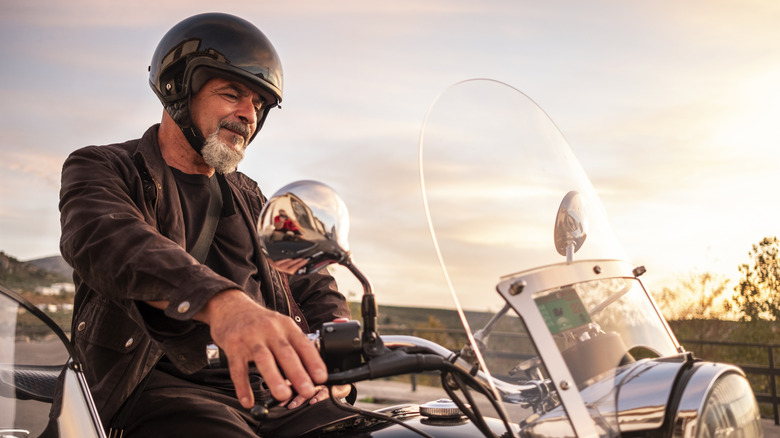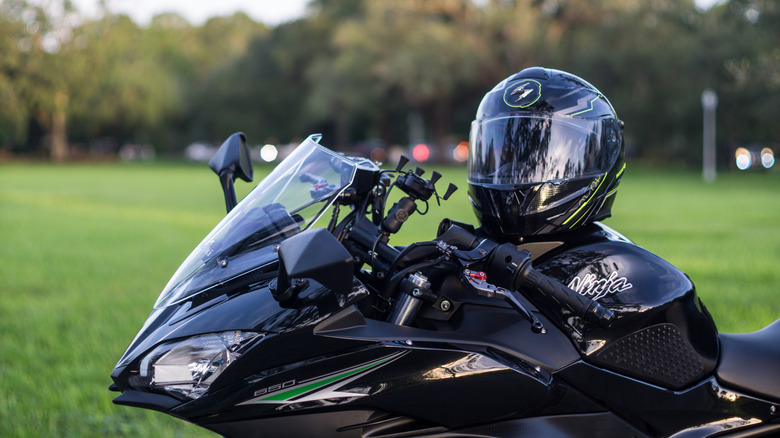Motorcycle Helmets: What Different Types Can Bikers Buy & Why Does Style Matter?
When you think about motorcycle helmets, naturally, safety is among the first things to come to mind, given some of the dangers associated with riding a motorcycle. That's why most motorcycle brands offer a range of safety features on their bikes, from anti-lock braking systems, to traction control and advanced LED lighting.
While the same level of precaution is usually taken when selecting a helmet, style should also be prioritized in the decision-making process. After all, when you look good, you feel good, and when you feel good, you perform well.
There are many types of motorcycle helmets, just like how there's a significant number of motorcycle niches, which can make choosing one a bit overwhelming. Luckily, the process isn't as difficult as it might seem. The first things to consider are, of course, the size and shape of your head, as the proper fit of the helmet is among the most essential factors in choosing a helmet. Once you know your measurements and shape, you can select a helmet type that suits your riding preferences, ranging from modular and dual-sport helmets to off-road and half helmets.
Off-road and dual-sport helmets are ideal for off-road adventures
A motorcycle helmet is like an article of clothing you throw on before leaving the house. You want it to fit just right, with no room for it to shift, slip off, or be too tight. However, while looser-fitting clothes might be acceptable and even recommended at times, the fit of a helmet cannot be negotiated, and it could make a huge difference if something goes wrong. As such, consider checking your head measurements and size before choosing a helmet, just as you do before buying new clothes.
With your measurements and head shape in mind, you can now select the helmet style that best suits you while riding. One of the main factors determining what you'll settle for here is, obviously, the type of motorcycle you're riding. A dirt bike on a mountainous dirt trail would require an off-road helmet, which typically features an extended chin bar, and also accommodates goggles through a wide opening. This helmet features aggressive vents for maximum airflow, and a peak to protect from the sun and flying debris, all of which are crucial when tearing down an off-road trail.
Conversely, you can settle for a dual-sport helmet, which, like the off-road helmet, comes with an extended chin bar. However, a dual-sport helmet features a street-style face shield, as well as more insulation than off-road helmets. It is more versatile, as it can be used in a variety of on and off-road adventures, regardless of most weather conditions.
Modular helmets are great for touring
On the other end of the spectrum is a modular helmet, which is ideal for a relaxing day riding on a countryside highway. Modular helmets offer excellent comfort, ventilation, and include a sun visor, making them perfect for touring. For shorter rides on a cruiser, such as the Harley-Davidson Sportster 883 or Sportster 1200, you can consider a half helmet, or even an open-face helmet. While these three helmet types don't come with a chin guard, they still offer more protection than going completely without a helmet.
You can also choose a full-face helmet if you want extra protection, as it provides better safety compared to the other types. A full-face helmet can protect your head and face from impacts, while also featuring an integrated visor that shields you from the sun and debris while riding. Given their effectiveness as protective gear, you could also use them for sportbikes, which are known for their speed and agility.
Regardless of which helmet you choose, ensure that each option you consider adheres to safety standards, as a helmet is only stylish if it actually serves its purpose of not only keeping you safe, but also making you an effective biker on the trail, street, highway, or track. You can also explore other types, such as MIPS motorcycle helmets, for an additional layer of protection.


